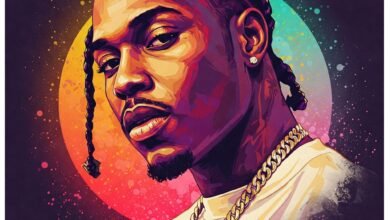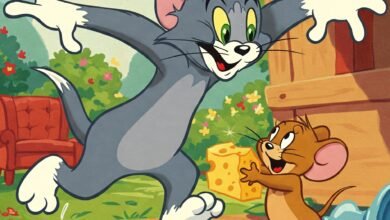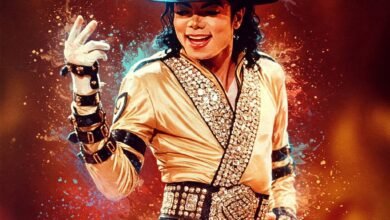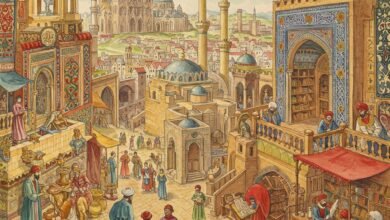The Saga of Ragnar Lothbrok: A Protagonist of Epic Proportions in Vikings
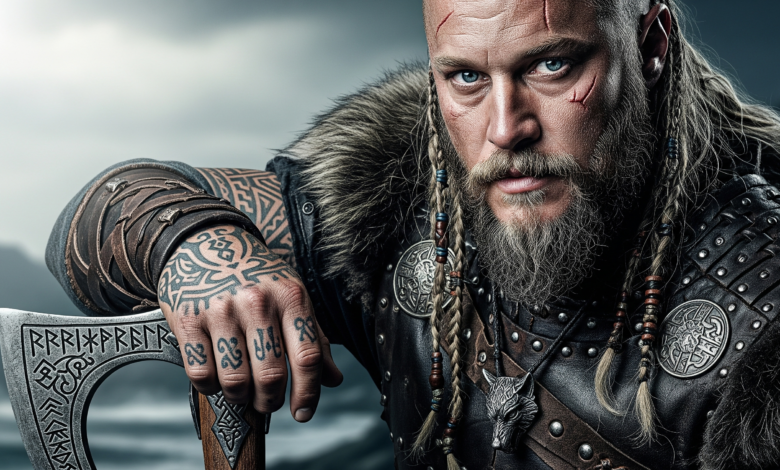
Introduction to Ragnar Lothbrok
Ragnar Lothbrok is a pivotal character in the acclaimed series ‘Vikings,’ capturing the imaginations of audiences through his embodiment of strength, ambition, and complexity. Known primarily as a legendary Viking hero, Ragnar’s historical roots are deeply embedded in Norse mythology and sagas, which describe him as a formidable warrior and cunning leader. He is often depicted as a king of Denmark and a notable figure in the Viking Age, renowned for his exploration and conquests across Europe.
In ‘Vikings,’ the character of Ragnar serves as a bridge between history and myth, crafted to reflect both the legendary tales attributed to him and the realities of Viking society. As a composite character, Ragnar combines various elements from historical accounts, sagas, and imaginative storytelling, resulting in a portrayal that is both fascinating and multi-dimensional. This dual identity accentuates his significance, as he not only represents an archetypal Viking leader but also embodies the personal struggles and ambitions that resonate with contemporary audiences.
The character’s journey throughout the series explores themes of leadership, loyalty, and the quest for power, reflecting the broader complexities of the Viking world. Ragnar’s interactions with other key figures such as Lagertha and Rollo lend further depth to his character, illustrating the intricacies of personal relationships set against the backdrop of political discord and warfare. This portrayal emphasizes how Ragnar navigates the treacherous waters of both personal and national allegiance, contributing to his status as a character of epic proportions in the saga of ‘Vikings.’
As viewers delve into Ragnar Lothbrok’s life, they are invited to appreciate the blend of myth and history that shapes his narrative, setting the stage for a deeper exploration of his character and legacy throughout the series.
Ragnar’s Origins and Background
Ragnar Lothbrok, a character whose life embodies the spirit of the Viking Age, has origins deeply rooted in the tapestry of Norse mythology and history. Born into a family linked to nobility, Ragnar was raised in a society where bravery and seafaring skills were deeply esteemed. Growing up in 9th-century Scandinavia, he was influenced by the tumultuous socio-political climate that defined the era. The Viking Age was characterized by expeditions, conquests, and a burgeoning sense of exploration, shaping Ragnar’s early motivations and worldview.
His lineage is often disputed, with various sagas suggesting that he descended from the semi-legendary Swedish king Sigurd Ring. This connection instilled in him a sense of destiny, propelling him to pursue the life of a Viking. Family played a crucial role in Ragnar’s upbringing, with his father likely inspiring him with tales of adventures and conquests. The concept of honor in warfare, coupled with the allure of raiding and trading, would have profoundly motivated him during his formative years.
Ragnar’s early encounters and experiences were pivotal in laying the groundwork for his legendary saga. Engaging in various raids and interactions with different cultures opened his eyes to the possibilities beyond his homelands. This desire to explore uncharted territories, combined with the traditional Viking ethos of valor and ambition, positioned Ragnar as a figure eager to transcend his humble beginnings. Through these formative experiences, Ragnar Lothbrok emerged not just as a leader but as a symbol of the unquenchable Viking spirit, destined to carve his name into the annals of history.
Character Traits and Leadership Style
Ragnar Lothbrok, as depicted in the series “Vikings,” is a multifaceted character whose intelligence and ambition play pivotal roles in shaping his journey as a legendary figure. One of his most prominent traits is his strategic thinking, allowing him to navigate complex political landscapes and forge alliances that bolster his power. Unlike traditional Viking leaders who often relied on sheer brute force and displays of valor, Ragnar embodies a more nuanced approach, prioritizing intellect as a means to achieve his goals.
His ambition drives him to explore new horizons, both geographically and culturally. Ragnar does not confine himself to the conventional paths trodden by his forebears; rather, he seeks new lands and opportunities, showcasing his innovative spirit. This ambition is coupled with a deep sense of curiosity, motivating him to learn from others and adapt strategies that have proven effective in foreign lands. Such traits make him not just a warrior but also a pioneer, a trait highly regarded among his followers.
Ragnar’s leadership style diverges from traditional Viking norms in that he fosters a culture of loyalty and respect rather than instilling fear. He inspires his followers through his vision and charisma, making them willing participants in his ambitions rather than mere subjects. This ability to galvanize his crew creates a formidable and united front during raids, where his unorthodox tactics often lead to unexpected victories. Ragnar’s strategic brilliance is illustrated in his use of deceptive warfare, allowing him to outmaneuver opponents through clever planning rather than reliance on menial combat prowess.
Ultimately, Ragnar Lothbrok’s character traits and leadership style constitute a departure from the archetype of the Viking leader. His intelligence, ambition, and innovative thinking not only define his role within the saga but also set him apart as a luminary among warriors, making him a compelling protagonist in the series “Vikings.”
Ragnar’s Relationships and Family Dynamics
In the television series “Vikings,” Ragnar Lothbrok’s relationships serve as a critical backbone to the narrative, illustrating the complexities of love, loyalty, and betrayal within a family dynamic. Central to his personal life are his two significant wives: Lagertha, his first wife, and Aslaug, whom he marries later. Lagertha, a shieldmaiden and his confidante, shares a deep bond with Ragnar. Their relationship is marked by mutual respect and shared ambitions, yet it faces challenges, primarily due to Ragnar’s interactions with Aslaug. Aslaug, who enters Ragnar’s life during his travels, embodies a different set of values and offers him a new vision of family, resulting in emotional turmoil and redefining bonds of fidelity.
The tension between these two relationships serves as a catalyst for many of Ragnar’s decisions, impacting his leadership and his role as a father. Each wife provides him with sons—Bjorn, the bold and adventurous heir to Ragnar’s legacy from Lagertha, and the infamous Ivar and his brothers from Aslaug. The multifaceted relationships among Ragnar’s children create intricate dynamics that influence their individual identities and objectives. For instance, Ivar’s eventual desire for power and recognition can be traced back to the complex dynamics with both his father and his brothers.
Moreover, the series highlights the tragic undertones of familial bonds, showcasing how Ragnar’s choices create ripples that affect his loved ones. His decisions often come at a high cost, resulting in rivalries that intertwine love with betrayal. This portrayal encapsulates the notion that while familial ties can foster strength and unity, they can equally lead to discord and conflict, enriching the narrative with themes of loyalty and the weight of expectations. Such family dynamics within “Vikings” elevate Ragnar’s character from a mere warrior to a multifaceted protagonist, shaping his journey through an epic saga steeped in emotional depth.
Ragnar’s Viking Raids and Cultural Impact
Ragnar Lothbrok, a semi-legendary figure in Viking history, is renowned for his formidable raids that spanned across different territories in Europe, significantly shaping the narrative of the Viking Age. Among the most notable of his expeditions were those to England and Paris, which showcased not only his strategic military prowess but also the broader cultural implications of Viking incursions.
One of Ragnar’s most significant raids occurred in the early 9th century when he launched an attack on the Kingdom of East Anglia. This raid was notable for its brutality and the considerable wealth that Ragnar’s forces acquired, including precious artifacts and monetary treasures. The plundering of monasteries, which were often poorly defended, allowed the Vikings to establish a reputation that reached far beyond the shores of England. This event marked a pivotal moment in Viking history, encouraging further expeditions and the eventual establishment of Norse settlements in the region.
Ragnar’s assault on Paris in 845 was another exhilarating chapter in his saga. This siege, involving a fleet of forty ships, led to significant destruction and brought the Frankish Empire to the brink of surrender. The sheer audacity of Ragnar’s raid instilled fear throughout the continent and prompted new military strategies among European powers, who recognized the necessity to defend against Viking incursions. Furthermore, the Treaty of Saint-Clair-sur-Epte, resulting from subsequent Viking interactions, allowed the Norse to settle in Northern France, leading to the development of a distinct culture that blended Norse and Frankish influences.
Through these expeditions, Ragnar Lothbrok played an instrumental role in the expansion of Norse culture, fostering an era where Viking influence permeated much of Europe. The impact of his raids extended beyond immediate territorial gains, sparking significant changes in trade, warfare, and cultural exchange within the regions affected by his campaigns.
Ragnar as a Symbol of Norse Mythology
Ragnar Lothbrok stands as a formidable representation of Norse mythology, embodying a range of characteristics and values that resonate deeply within the ancient tales and sagas. His journey mirrors the trials and tribulations faced by legendary figures, replicating thematic elements central to the Viking ethos. Specifically, Ragnar’s character reflects the dichotomy of fate and free will, a recurring concept in Norse narratives. Much like the gods Odin and Thor, Ragnar’s actions can be perceived as a quest for honor and glory, reflecting the warrior’s path.
The parallels between Ragnar and Odin are particularly striking. Both figures demonstrate an acute awareness of fate and destiny. Odin, known as the Allfather, governs the realms of wisdom, war, and death, while Ragnar embarks on his quests with an ambition that often leads to his own demise. This notion of an inescapable fate resonates with the overarching narratives found in the Poetic Edda, where characters often grapple with the limits of their control over destiny. Ragnar’s relentless pursuit of conquest ultimately highlights the fatalistic perspective embedded in Norse culture, positioning him as a hero who is both admired and tragic.
Furthermore, Ragnar’s warrior ethos aligns closely with the attributes associated with Thor, the hammer-wielding god of thunder. Much like Thor, Ragnar exhibits bravery, strength, and an unwavering commitment to his kin. His leadership in battles and raids symbolizes the honor that Vikings valued in their culture. The concept of “honor” is paramount in Norse society, and Ragnar’s willingness to face adversities exemplifies the warrior ideal, challenging adversaries with a courage reminiscent of mythological heroes.
In conclusion, Ragnar Lothbrok serves as a symbol of Norse mythology through his embodiment of fate, honor, and the warrior ethos. His character not only reflects the values revered by the Vikings but also bridges the gap between mythology and historical interpretation, illustrating the lasting impact these ancient narratives have on contemporary understanding of Norse culture.
Ragnar’s Legacy and Influence
Ragnar Lothbrok, a central figure in the Viking series, leaves behind a legacy that shapes not only his immediate family but also the trajectory of Viking culture and mythology. His character is depicted as a daring warrior and a resourceful leader, traits that resonate through the actions of his sons and subsequent generations. The series illustrates how Ragnar’s ambition and explorations set a precedent for his sons, particularly Bjorn Ironside, Ivar the Boneless, and Ubbe, who each undertake their own legendary adventures steeped in their father’s spirit. This familial lineage emphasizes the potency of Ragnar’s influence, positioning him as a founding figure in the tales that comprise the Viking sagas.
In the series, Ragnar’s philosophy and approach to leadership significantly impact those around him, illustrating the transmission of values and ideals through bloodlines. His innovative strategies in combat and navigation inspire his sons, cementing them as formidable leaders in their own right. This generational transfer of wisdom showcases how Ragnar’s legacy extends beyond his life, emphasizing the importance of mentorship and the impact of parental figures on shaping identities within familial and cultural contexts.
The cultural impact of Ragnar’s character is not confined to the screen but reflects broader historical narratives as well. The sagas that chronicle the lives of Viking warriors often draw upon the archetype of Ragnar Lothbrok as both a hero and an anti-hero, embodying the complexities of Viking society. His mythical status has permeated popular culture, revitalizing interest in the Viking Age and shaping the perception of Norse mythology. As audiences engage with his story, they witness the reverberations of his legacy reflected in modern interpretations of the Viking narrative, highlighting the enduring nature of such historical figures. Thus, Ragnar Lothbrok’s life and actions remain influential, leaving a profound imprint on both the Viking sagas and contemporary culture.
Critical Reception and Interpretations
The character of Ragnar Lothbrok has elicited a wide range of interpretations from both critics and audiences, making him a subject of ongoing discussion within the realm of television narratives. His portrayal oscillates between that of a hero and a villain, reflecting the multifaceted nature of his character and the complexities of leadership. Critics have noted that Ragnar’s actions, while often brutal, are driven by a desire for exploration and an unquenchable thirst for knowledge. This duality invites viewers to contemplate the very essence of heroism, particularly in the context of the Viking Age, where moral ambiguity often prevailed.
Contemporary societal values play a significant role in how Ragnar is perceived. In an era that champions attributes such as egalitarianism and authenticity, Ragnar’s traditional leadership traits—ruthlessness, ambition, and a relentless pursuit of power—highlight the tension between past and present ideals. Critics suggest that his character serves as a reflection of our current attitudes toward authority, where strong leadership can often be synonymous with controversial decisions. This reality urges audiences to grapple with the notions of morality intertwined with ambition and power dynamics.
Moreover, the portrayal of Ragnar Lothbrok as both a heroic figure and a flawed leader aligns with the contemporary discourse surrounding the complexities of power. Audiences resonate with his journey, understanding that in his pursuit of greatness, he faces the inevitable consequences of his actions. This nuanced depiction raises critical questions about the nature of heroism itself. Are heroes defined solely by their actions, or do they also embody human frailty? Ultimately, Ragnar Lothbrok emerges as a symbol of the complexities inherent in leadership, eliciting admiration and critique alike, thus reinforcing his status in popular culture as a character of epic proportions.
Conclusion: The Enduring Fascination with Ragnar Lothbrok
Ragnar Lothbrok, the legendary Norse hero and a central figure in the saga of Viking history, continues to capture the imagination of audiences around the world. His multifaceted character, as portrayed in both historical texts and modern adaptations, exemplifies the complexities of a visionary leader who navigated the treacherous waters of Viking politics, warfare, and exploration. The tales woven around Ragnar reflect not only the martial prowess and adventurous spirit typical of Vikings but also highlight deeply human themes such as ambition, betrayal, familial ties, and mortality.
The enduring fascination with Ragnar Lothbrok can be primarily attributed to his embodiment of the Viking spirit. His exploits, from daring raids to strategic alliances, illustrate how he resonated with the socio-political dynamics of his time. Historians and storytellers alike have embraced these narratives, presenting him as an archetype of bravery and cunning. This representation has been further popularized by mediums such as television, where series dedicated to his life have brought Ragnar into contemporary cultural discourse, making him accessible to a wider audience.
Moreover, the character’s complexity enables viewers and readers to engage with him on various levels. As a father, husband, and leader, Ragnar’s relationships depict the struggles and triumphs of maintaining one’s identity amidst the chaotic backdrop of Viking society. His narrative also serves as a conduit to explore themes of glory and the transient nature of life, which resonate with many beyond the historical context.
Ultimately, Ragnar Lothbrok remains a timeless symbol of Viking lore. His legendary status prompts reflection on what it means to be a leader and the legacy one leaves behind. As we delve into the stories surrounding him, we not only celebrate a heroic figure but also gain insights into the human condition, ensuring that Ragnar’s saga endures for generations to come.





